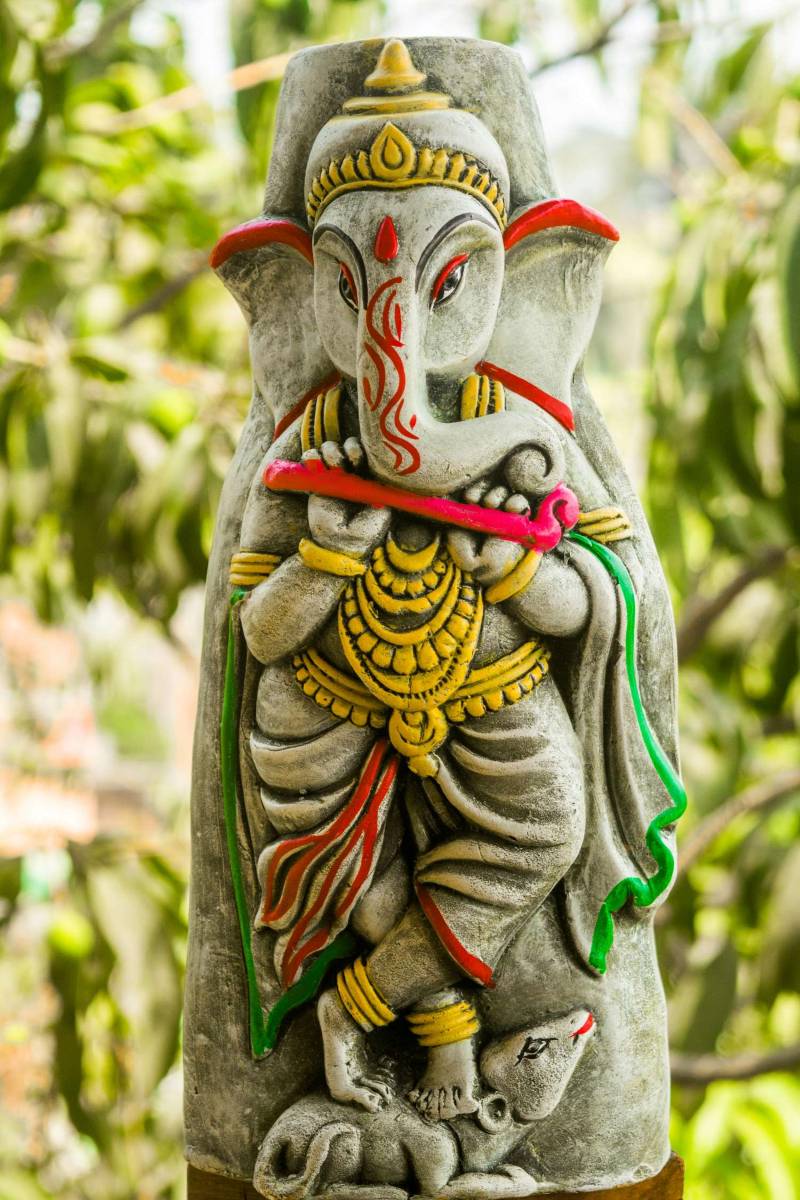Vedic Astrology: Stellar Insights into the 27 Nakshatras
-

In Vedic astrology, the Moon holds unparalleled importance, guiding us through life’s emotional and spiritual tides. The 27 Nakshatras, or lunar mansions, offer a profound lens into understanding our personalities and the cosmic rhythm shaping our minds, emotions, and spiritual evolution. These Nakshatras elegantly intertwine astrology and mythology, revealing insights into the universe’s deeper workings and our role within it.
Why Are Nakshatras So Special?
Nakshatras serve as reflective mirrors of our inner worlds, guiding us through the cycles of creation, destruction, healing, and transformation. Just as Hasta, linked to the golden hands of the healer, tarot reader, or poker player, reminds us of the power within our hands to shape the reality we bring forth, Shravana—symbolized by the ear—urges us to listen deeply and hear the wisdom of the universe echoing through our lives.
The ancient lore embedded in these Nakshatras resonates with modern life, inviting us to uncover the layers of meaning and alignment within our own paths. Whether navigating the rebellious storms of Ardra or embracing the leadership qualities of Magha, the Nakshatras serve as timeless guides, connecting the cosmic to the personal and the mythic to the everyday.
-

Lunar Mansions: Quick Insights into the 27 Nakshatras of the Zodiac
Each Nakshatra traces the Moon’s path through the zodiac, covering 13°20′ of the ecliptic. In Vedic astrology, while the Sun symbolizes the soul (atman), the Moon represents the mind—encompassing our intuition, emotions, and sensitivity. It is through the Moon that we experience life.
Every Nakshatra is connected to a ruling deity and planet, weaving mythological stories that reflect its unique qualities and lessons. This rich symbolism sets Vedic astrology apart, offering a more personal and nuanced map of the psyche and exploring the emotional and spiritual layers of life.
The Nakshatras are timeless archetypes, seamlessly blending planetary influence with divine myth.
Ashwini (0°00′ – 13°20′ Aries)
Symbolized by the swift horse-headed twins and ruled by Ketu (South Node of the Moon), Ashwini embodies speed, healing, and new beginnings. Its energy is dynamic, leading the charge with initiative and vigor.
Bharani (13°20′ – 26°40′ Aries)
Ruled by Venus and symbolized by the yoni (womb), Bharani signifies birth, creation, and the cycles of life, emphasizing transformation and the power of endurance.
Krittika (26°40′ Aries – 10°00′ Taurus)
The sharp, cutting energy of Krittika, ruled by the Sun, represents clarity and purification. Like a sword, it cuts through illusions, providing a path to inner truth.
Rohini (10°00′ – 23°20′ Taurus)
Ruled by the Moon, Rohini symbolizes fertility, beauty, and nurturing. Its energy promotes creativity, sensuality, and the growth of all things, from ideas to material abundance.
Mrigashira (23°20′ Taurus – 6°40′ Gemini)
Ruled by Mars and symbolized by a deer’s head, Mrigashira is a seeker, embodying curiosity, exploration, and the search for purpose. It fuels intellectual quests and personal discovery.
Ardra (6°40′ – 20°00′ Gemini)
Ardra represents storms and emotional renewal. Its symbol, the tear, reflects catharsis, emotional cleansing, and the strength found in rebuilding after life’s tempests.
Punarvasu (20°00′ Gemini – 3°20′ Cancer)
Ruled by Jupiter, Punarvasu symbolizes renewal and returning to one’s origins. Its energy offers spiritual growth, contentment, and the promise of second chances.
Pushya (3°20′ – 16°40′ Cancer)
The nurturing energy of Pushya, is symbolized by the udder of a cow. This Nakshatra represents nourishment, support, and the wisdom gained from compassion.
Ashlesha (16°40′ – 30°00′ Cancer)
Ashlesha, ruled by Mercury and symbolized by the serpent, carries an aura of mystery and deep insight. Its energy encourages exploration of the hidden realms, both within and outside the self.
Magha (0°00′ – 13°20′ Leo)
Magha, ruled by Ketu is symbolized by a royal throne. Its energy connects us to our ancestors, inspiring leadership, authority, and respect for tradition and lineage.
Purva Phalguni (13°20′ – 26°40′ Leo)
Ruled by Venus, Purva Phalguni embodies creativity, pleasure, and the enjoyment of life’s luxuries. This Nakshatra is all about self-expression and indulging in the fruits of one’s labor.
Uttara Phalguni (26°40′ Leo – 10°00′ Virgo)
Uttara Phalguni, is ruled by the Sun and focused on partnerships, contracts, and dharma. It represents the pursuit of righteousness and the power of collaboration.
Hasta (10°00′ – 23°20′ Virgo)
Ruled by the Moon and symbolized by a hand, Hasta signifies skill, dexterity, and the ability to manifest. It brings forth creativity through practical, hands-on work.
Chitra (23°20′ Virgo – 6°40′ Libra)
Chitra, ruled by Mars is symbolized by a shining jewel. This Nakshatra represents creativity, brilliance, and beauty, infusing life with artistic vision and perfection.
Swati (6°40′ – 20°00′ Libra)
Ruled by Rahu, Swati embodies independence and adaptability. Like the wind, it represents flexibility, freedom, and the power to move with life’s changing currents.
Vishakha (20°00′ Libra – 3°20′ Scorpio)
Vishakha, ruled by Jupiter, symbolizes triumph and ambition. Its energy pushes for determination, victory, and the achievement of long-term goals.
Anuradha (3°20′ – 16°40′ Scorpio)
Anuradha represents friendship, devotion, and success through cooperation. Its energy encourages connection, loyalty, and the pursuit of shared goals.
Jyeshta (16°40′ – 30°00′ Scorpio)
Ruled by Mercury and symbolized by an earring, Jyeshta is associated with seniority, power, and protection. Its energy emphasizes responsibility and the safeguarding of others.
Mula (0°00′ – 13°20′ Sagittarius)
Ruled by Ketu and symbolized by roots, Mula embodies destruction, transformation, and the search for truth. It encourages us to dig deep, confront the core of our existence, and rebuild from the ground up.
Purva Ashadha (13°20′ – 26°40′ Sagittarius)
Purva Ashadha, ruled by Venus, symbolizes invincibility and the power of purity and rejuvenation. Its energy brings victory in life’s challenges and emphasizes personal growth through perseverance.
Uttara Ashadha (26°40′ Sagittarius – 10°00′ Capricorn)
Ruled by the Sun, Uttara Ashadha symbolizes leadership, lasting achievement, and the power of undisputed victory. It represents the strength to stand firm in one’s convictions.
Shravana (10°00′ – 23°20′ Capricorn)
Ruled by the Moon, Shravana is symbolized by an ear, representing listening and learning. Its energy is about absorbing knowledge and passing it on to others, making it the Nakshatra of communication and wisdom.
Dhanishta (23°20′ Capricorn – 6°40′ Aquarius)
Ruled by Mars and symbolized by a drum, Dhanishta represents rhythm, prosperity, and success. Its energy focuses on the power of sound and movement (pulse of life) to create harmony and abundance.
Shatabhisha (6°40′ – 20°00′ Aquarius)
Ruled by Rahu, Shatabhisha symbolizes healing and the power of secret knowledge. Whether as a scientist, a cyber expert, or a crypto master, Shatabhisha individuals possess a unique knack for making discoveries that shape the future.
Purva Bhadrapada (20°00′ Aquarius – 3°20′ Pisces)
Purva Bhadrapada is ruled by Jupiter and symbolized by the two-faced man. This duality can manifest as a double life or extremes of personality, reflecting wisdom gained from the past. Characterized by a sharp, bold, and fiery nature, these nonconformists are driven by high achievement and confront challenges head-on, navigating life with determination. Their emotional profile oscillates between indulgence and relentless pursuit.
Uttara Bhadrapada (3°20′ – 16°40′ Pisces)
Uttara Bhadrapada possess a calm demeanor and are renowned for their wisdom and intelligence. As old souls, they engage in profound thinking and often excel as great orators, making them effective motivational speakers, lawyers, activists, and family patrons who carry on their family lineage.
Revati (16°40′ – 30°00′ Pisces)
Revati symbolizes protection, nourishment, and the soul’s final journey. Its energy emphasizes compassion, care, detachment, and spiritual waters. Known for embodying true wealth, and a love for animals, Revati is at peace with the material world while preparing for its spiritual journey.
Abhijit, often considered the 28th Nakshatra in some teachings and part of Uttara Ashada, symbolizes victory and triumph. Positioned between 6°40′ and 10° in Capricorn, it is associated with powerful energies that promote success and the ability to overcome all obstacles. Individuals influenced by Abhijit often exhibit strong leadership qualities, intellectual prowess, and a deep sense of purpose.Nakshatras’ rich symbolism, steeped in mythology, continues to offer clarity and purpose in our contemporary world, reflecting our inner truth and inspiring personal



